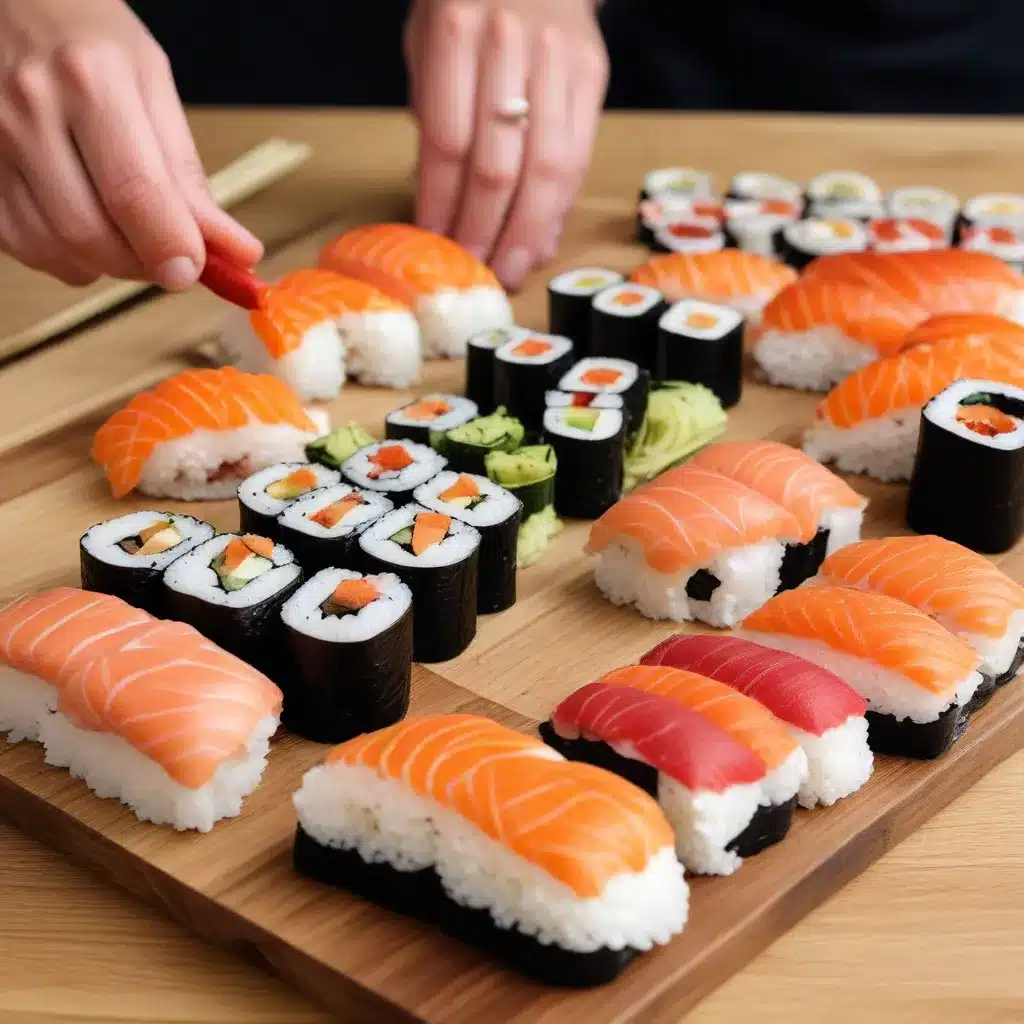
In the realm of culinary arts, sushi stands as a pinnacle of precision, where the pursuit of perfection is not merely a lofty goal but a way of life. For the dedicated sushi chef, every aspect of the craft, from ingredient selection to knife work and presentation, is a meticulously choreographed dance that captivates the senses and delights the palate.
Sushi Preparation Essentials
Crafting exquisite sushi at home begins with understanding the essential tools and techniques that underpin this revered culinary art. At the heart of the sushi-making process is the selection of high-quality, sushi-grade ingredients. From the selection of the freshest seafood to the procurement of authentic Japanese sushi rice, every component must be handled with the utmost care and attention to detail.
Mastering the art of preparing sushi rice is a fundamental step in the journey towards sushi mastery. The rice serves as the foundation upon which the flavors and textures of the dish will harmoniously come together. Achieving the perfect balance of stickiness, sweetness, and acidity requires a keen understanding of the rice-cooking process, including proper rinsing, optimal water-to-rice ratios, and precise temperature control.
Beyond the rice, the tools used in sushi preparation play a crucial role in the final presentation and taste of the dish. Traditional Japanese implements, such as a sharp sushi knife, a bamboo rolling mat, and a rice paddle, are essential for creating uniform rolls, precise cuts, and a visually stunning final product.
Sushi Varieties and Fillings
The world of sushi is a tapestry of rich tradition and boundless creativity. From the classic nigiri, where a delicate slice of sashimi-grade fish rests atop a perfectly molded bed of sushi rice, to the beloved maki rolls, where a symphony of flavors and textures are tightly wrapped in seaweed, each sushi style offers a unique culinary experience.
As sushi has evolved, innovative chefs have embraced the art of fusion, blending traditional Japanese techniques with bold, global flavors. Vegetarian and vegan sushi options have also gained popularity, offering plant-based fillings that cater to diverse dietary preferences without compromising on taste or authenticity.
Sushi Rolling Techniques
The art of sushi rolling, known as maki-sushi, is a skill that requires finesse, patience, and a keen eye for detail. Mastering the basic California roll or spicy tuna roll lays the foundation for more advanced sushi rolling techniques, such as the inside-out roll or the visually stunning rainbow roll.
Beyond the classic maki sushi, sushi chefs have elevated the art of presentation with nigiri and sashimi. The precision required to craft these delicate bites of raw fish and expertly arranged on the plate is a testament to the sushi chef’s mastery of knife skills and attention to detail.
Sushi Plating and Presentation
The presentation of sushi is a crucial element of the dining experience, as the visual appeal of the dish sets the stage for the flavors that will follow. Sushi chefs often utilize artistic garnishes, vibrant sauces, and meticulously arranged components to create visually stunning plates that captivate the senses even before the first bite.
Proper sushi serving etiquette is also an integral part of the experience. Understanding the nuances of sushi dining customs, such as the appropriate use of soy sauce, wasabi, and ginger, can elevate the overall enjoyment of the meal.
Flavor Profiles and Seasoning
The harmonious balance of flavors is the hallmark of exceptional sushi. Traditional Japanese seasonings, such as mirin, rice vinegar, and soy sauce, play a pivotal role in crafting the delicate flavors that define authentic sushi. However, as sushi has gained global popularity, innovative chefs have explored bold flavor combinations, incorporating diverse ingredients and spices to create unique and memorable sushi experiences.
Whether adhering to tradition or embracing creativity, the mastery of sushi lies in the chef’s ability to seamlessly blend the flavors, textures, and visual elements of the dish, creating a culinary masterpiece that delights the senses and leaves a lasting impression on the palate.
Food Safety and Preparation Hygiene
Sushi’s uncompromising commitment to quality and freshness extends beyond the plate, as food safety and preparation hygiene are paramount in the world of sushi. Sourcing sushi-grade fish, handling it with meticulous care, and maintaining a meticulously clean workspace are essential for ensuring the safety and purity of each sushi creation.
Sushi Serving Etiquette
Sushi dining is more than just a meal – it’s a cultural experience steeped in traditions and etiquette. Understanding the nuances of sushi serving and consumption, such as the proper use of chopsticks, the integration of soy sauce and wasabi, and the appropriate pairings with beverages, can elevate the overall enjoyment of the sushi experience.
Sushi Chef Techniques and Skills
Ultimately, the mastery of sushi is a lifetime pursuit, where each chef strives to hone their skills, push the boundaries of creativity, and honor the rich heritage of this culinary art form. From the precision of knife work to the artistry of plating and the relentless pursuit of perfection, the sushi chef’s journey is a testament to the power of dedication, passion, and a unwavering commitment to excellence.
As you embark on your own sushi-making adventure, embrace the spirit of the shokunin, the Japanese term for a true master craftsman. Immerse yourself in the traditions, techniques, and flavors of sushi, and let your passion for this remarkable culinary art guide you on a journey of exploration and self-discovery. With patience, practice, and a keen eye for detail, you too can elevate the art of sushi-making to new heights, creating delectable masterpieces that captivate the senses and celebrate the beauty of this timeless culinary tradition.

